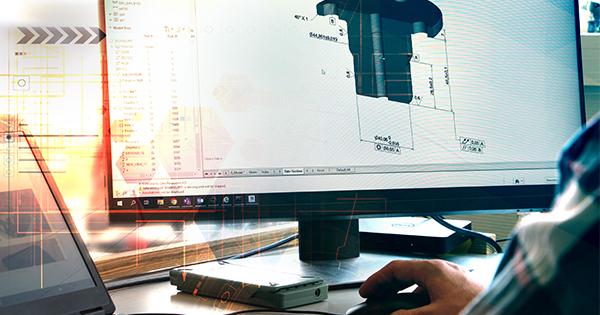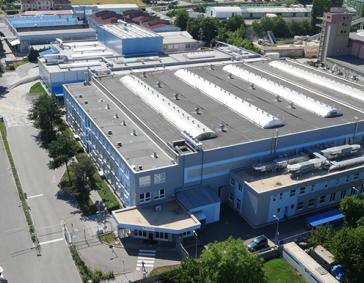Industry 4.0 Update: 3D Model-Based R-Evolution
3D design management is at the base of Poclain’s PLM strategy. It will impact all our business lines. As an early adopter for an international mid-size company, Poclain launched the first POC (Proof of Concept) concerning this subject in 2018. The main objective of the 3D model-based definition (MBD) project is to incorporate all the product definition information inside the 3D model, including tolerances.
Time saved during the product life-cycle
Moving to this new standard will mean fewer duplicated efforts and fewer errors, as it avoids recalculating and reentering data at multiple points during the product lifecycle. The POC identified a potential of time saved on design, mockup, and quality.
Today, the CAD-CAM software is able to use this data. The next step is a test case in manufacturing and quality control reporting on mockup team, which will soon go digital. Our industrial equipment is more and more connected and compliant with new industry 4.0 technologies. The end of 2D drawings in the factory means that the manufacturing and quality control workstations will be equipped with digital screens to display the 3D Model-Based files. It represents a disruptive change in how work is done.
The digital transformation around these product processes is a long-term evolution requiring cooperation from a multidisciplinary team. The team’s profiles range from IT and design engineers, to machining operators, sourcing, quality engineers as well as research & quick prototyping support from FAB’LAB 58.
Change management and multidisciplinary team
The strong skills and the cooperation of this multidisciplinary team are enabling Poclain Hydraulics to identify, incorporate and fully analyze the implementation of this standard at all levels of the workflow. Each member of the team analyses the impact and opportunities brought by this new technology. Identifying requirements and potential issues at each level will help to effectively implement a convergent standard allowing for end-to-end digital continuity. Training sessions for the POC group have been ongoing for several months. This project is challenging the team to continuously improve and grow their skills.
This initiative is in line with Poclain’s goal to deliver innovative solutions in a shorter time to market while integrating the latest norms and streamlining both downstream and upstream collaboration even while using wide range of tools.
Digital thread
A revolution at the heart of the industry 4.0 transformation, the implementation of this standard will mean new opportunities for our stakeholders. It should be a strong accelerator in the manufacturing process.
The digital continuity allows us to be much more efficient at every stage of the value chain, but also to capitalize on and improve our products’ quality and performance thanks to the digital twin. As an example, real data measured in the workshop can be automatically integrated as capability index during tolerancing process.
Going from the drawing board to 2D CAD software, or from 2D to 3D CAD, MBD is disruptive – not only for our R&D team, but for the entire value chain: manufacturing, quality, suppliers, etc. 3D Model-Based r-evolution is a transformation in progress.



